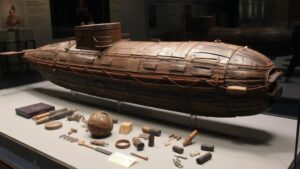Unearthing Glass Bottles in Historic Trash Midden Layers
Unearthing Glass Bottles in Historic Trash Midden Layers
In the field of archaeology, the examination of trash midden layers provides a unique window into the past. Among the various artifacts unearthed, glass bottles stand out for their ability to convey information about social practices, commercial trends, and technological advancements of the time. This article delves into the methodologies, significance, and implications of studying glass bottles found in historic trash middens.
Understanding Trash Middens
A trash midden, often referred to as an archaeological dump, is a site where refuse was deposited over time. e layers accumulate organic and inorganic waste, creating a stratified profile that can span centuries. Archaeologists utilize these layers to reconstruct daily life, diets, and economic activities of historical populations.
Typical components found within trash middens include:
- Food remains, such as bones and shells
- Household items, including ceramics and glassware
- Industrial waste, such as metal scraps and packaging
The Role of Glass Bottles
Glass bottles are significant artifacts for several reasons. Their composition, form, and decoration can reveal much about the era in which they were produced. study of these bottles allows archaeologists to track changes in technology, trade practices, and consumer behavior.
Material Composition and Manufacture
The materials used in manufacturing glass bottles primarily include silica, soda, and lime. Variations in these materials can indicate different production techniques and technological advancements. For example, the introduction of soda-lime glass in the 17th century revolutionized the industry, allowing for mass production and a reduction in costs.
Glass bottles can also provide insights into the glass-blowing techniques of specific periods. transition from hand-blown to machine-made bottles in the 19th century marked a significant shift in production efficiency. The presence of specific manufacturing marks or styles can help date the bottle and connect it to particular manufacturers or periods.
Excavation Techniques
The excavation of trash middens must be approached with precision and care to preserve context and details. Key techniques include:
- Stratigraphic excavation: This involves carefully removing layers to maintain the integrity of the site and understand the sequence of deposition.
- Site recording: Detailed documentation of the location, orientation, and condition of artifacts is essential for future analysis.
- Photographic and digital mapping: Utilizing technology to create accurate records of the site enhances data retrieval for further research.
Case Studies: Insights from Historical Sites
Numerous archaeological sites have yielded significant glass bottle finds that exemplify the value of trash midden studies. For example, the excavation at the 19th-century urban site of the infamous “Five Points” neighborhood in New York City revealed extensive layers of domestic refuse. Among the remnants were an array of glass bottles, including those used for soda and whiskey, reflecting the consumer habits of immigrants living in that area.
Another compelling case is the discovery at the William H. Seward House in Auburn, New York. Excavations revealed a dense concentration of glass bottles, including medicinal and cosmetic containers. These finds not only provided insights into health practices of the late 19th century but also underscored the intersection of cultural and commercial influences during that period.
Interpreting Findings and Broader Implications
Interpreting glass bottle finds from trash middens requires a comprehensive approach that considers historical context, environmental factors, and trade patterns. For example, a sudden influx of certain bottle types may indicate shifts in local markets or the introduction of new products. e interpretations can draw connections between consumer behavior and socioeconomic changes within communities.
Also, the analysis of glass bottles contributes to broader discussions surrounding sustainability and waste management practices, as historic refuse can reveal insights relevant to modern concerns about consumption and waste. In this way, the study of archaeological middens provides a crucial lens through which we can evaluate the progress of technological advancements in societal growth.
Actionable Takeaways
For historians and archaeologists, the unearthing of glass bottles from historic trash midden layers is more than an academic pursuit; it represents an opportunity to understand the complexities of human behavior through material culture. Key takeaways include:
- Prioritize stratigraphic excavation to maintain context and maximize the educational value of finds.
- Employ technology for accurate documentation and mapping to enhance data accessibility.
- Analyze the intersection of artifacts with broader historical and socioeconomic trends, offering a holistic view of past societies.
To wrap up, glass bottles recovered from historic trash midden layers serve as vital artifacts that illuminate aspects of past lifestyles, commercial practices, and technological advancements. Uncovering these layers not only reconstructs history but also informs modern challenges, linking the past to present-day concerns about waste and consumption.



